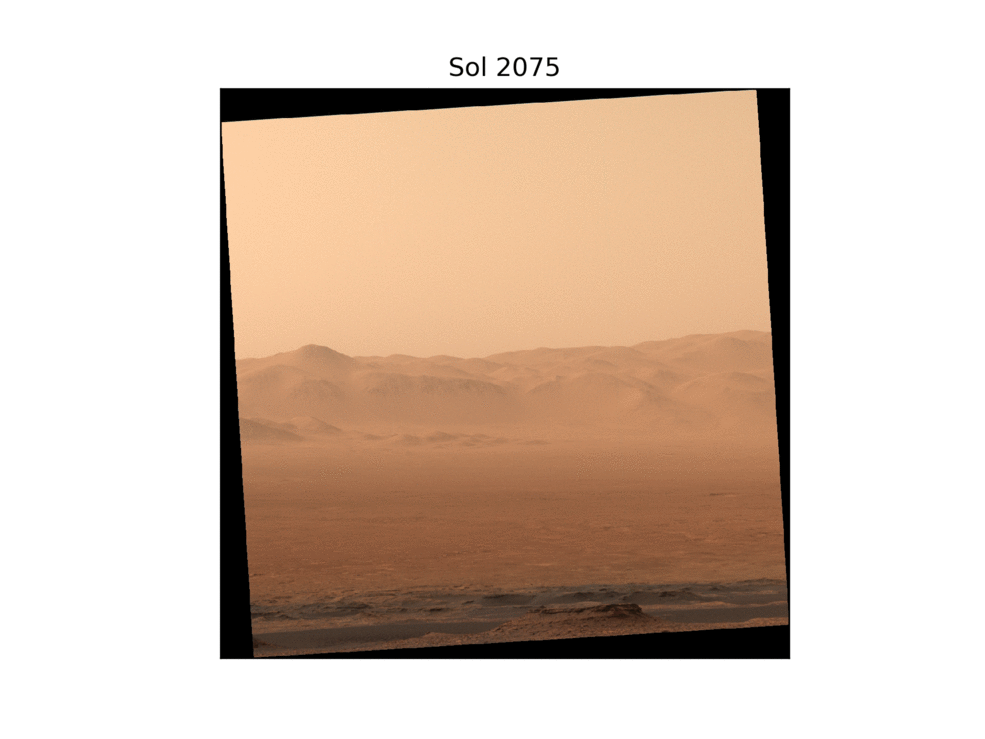
Huge Mars dust storms like the one that killed NASA's Opportunity rover may have helped to blow some of the Red Planet's ancient water away for good, researchers say.
In late May 2018, a dust storm began boiling up around Opportunity, which had been exploring the Red Planet since January 2004. The dust blocked sunlight's path to the ground, preventing the solar-powered robot from recharging its batteries for weeks. Oppy never recovered, and NASA declared the rover dead this past February.
But the storm didn't just affect Opportunity's digs near the Martian equator. By June, the maelstrom had grown into a global monster, covering Mars with a pall of dust.
Related: Mars Dust Storm 2018: How It Killed the Opportunity Rover
Such planet-wide storms aren't terribly rare; NASA spacecraft also observed them in 1971, 1977 (twice), 1982, 1994, 2001 and 2007. (Opportunity and its twin, Spirit, managed to ride out the 2007 storm, but the one in 2018 was more powerful.) And these dramatic events, which highlight how dry and dusty Mars is today, may have helped the planet get that way, recent research suggests.
Billions of years ago, Mars had a thick atmosphere and lots of liquid water; Opportunity, Spirit and their newer, bigger rover cousin, Curiosity, have found plenty of evidence to this effect over the years. Indeed, scientists think a deep ocean likely covered roughly 20% of the planet's surface in the ancient past.
Things began to change when Mars lost its global magnetic field about 4 billion years ago. With this protective barrier gone, charged solar particles stripped away most of the planet's atmosphere, and over time, Mars lost the ability to support liquid water on its surface.
Breaking space news, the latest updates on rocket launches, skywatching events and more!
Global dust storms may have aided this process, the new study suggests. Researchers used the European-Russian ExoMars Trace Gas Orbiter (TGO) to track the movement of water vapor in Mars' atmosphere before and after the 2018 dust storm.

TGO's data indicate that the maelstrom lofted water molecules much higher into the Martian sky — from their typical altitude of about 12 miles (20 kilometers) to 50 miles (80 km) or more above the ground, the researchers said. Way up there, where the air is very thin, solar radiation breaks apart water molecules into their constituent hydrogen and oxygen atoms much more easily. These elemental components can then be lost to space.
"When you bring water to higher parts of the atmosphere, it gets blown away so much easier," study co-author Geronimo Villanueva, a researcher at NASA's Goddard Space Flight Center in Greenbelt, Maryland, said in a statement.
The study, which was published last month in the journal Nature, also reported a puzzling result: TGO spotted no signs of methane in Mars' atmosphere, even though Curiosity has rolled through several plumes of the gas on the floor of the 96-mile-wide (154 kilometers) Gale Crater.
Astrobiologists are keen to map Mars' methane levels and understand what's producing it, because the gas might be a sign of biological activity on the Red Planet.
Researchers have been studying the 2018 Mars dust storm intensively, both to understand how such events affect the planet's climate and to better prepare for future surface missions. Dust storms pose a threat to solar-powered rovers and landers — a reality highlighted by Opportunity's fate. (Curiosity is nuclear-powered, so it was relatively unaffected.)
Such storms can have knock-on effects, too. For example, Curiosity's work shows that big dust storms inhibit the formation of dust devils — tornadoes of warm, dry air that can clean compromised solar panels.
"You need to be prepared to go a while before your next dust devil passes over and cleans you off," Scott Guzewich, an atmospheric scientist at NASA Goddard who's a lead in the agency's dust storm investigation, said in the same statement.
- In Photos: How NASA Said Goodbye to the Opportunity Rover on Mars
- Dust Storms Rage on Saturn Moon Titan, Just Like on Mars and Earth
- Mars' Atmosphere: Composition, Climate & Weather
Mike Wall's book about the search for alien life, "Out There" (Grand Central Publishing, 2018; illustrated by Karl Tate), is out now. Follow him on Twitter @michaeldwall. Follow us on Twitter @Spacedotcom or Facebook.
Join our Space Forums to keep talking space on the latest missions, night sky and more! And if you have a news tip, correction or comment, let us know at: community@space.com.

Michael Wall is a Senior Space Writer with Space.com and joined the team in 2010. He primarily covers exoplanets, spaceflight and military space, but has been known to dabble in the space art beat. His book about the search for alien life, "Out There," was published on Nov. 13, 2018. Before becoming a science writer, Michael worked as a herpetologist and wildlife biologist. He has a Ph.D. in evolutionary biology from the University of Sydney, Australia, a bachelor's degree from the University of Arizona, and a graduate certificate in science writing from the University of California, Santa Cruz. To find out what his latest project is, you can follow Michael on Twitter.
